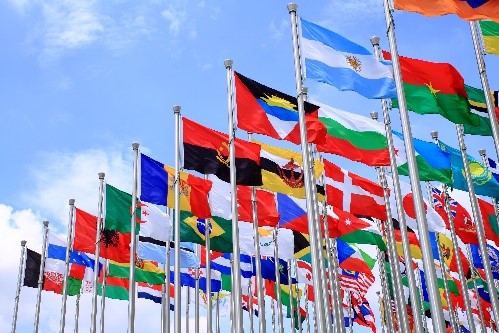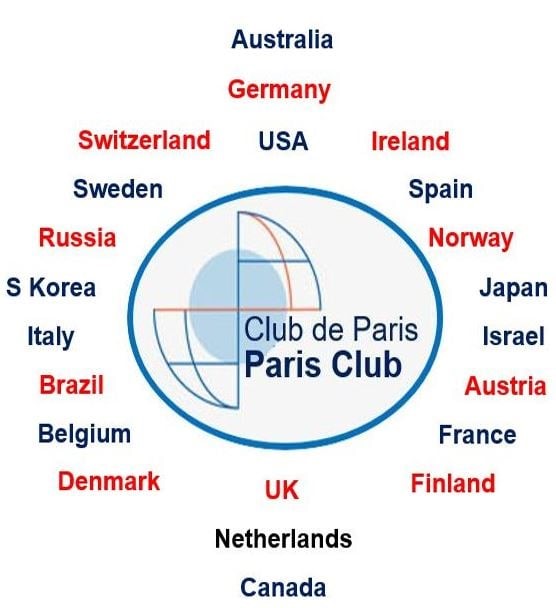Description

Disclaimer: Copyright infringement not intended.
Context
- Sri Lanka has reached an “agreement in principle” with India and the Paris Club Group of creditors, including Japan.
- The Agreement is on a debt treatment plan that will help the crisis-hit island nation tap International Monetary Fund’s $3-billion recovery package.
What is the Paris Club?
- The Paris Club is an informal group of creditor countries that work together to support nations facing financial difficulties, chiefly those struggling to pay off debts.
- Established in 1956, the club has its headquarters in the city it is named after.
- The group aims to help stabilize the macroeconomic and financial situation of countries and promote sustainable economic growth.

What does the Paris Club do?
- The Paris Club helps countries tide over financial difficulties.
- Countries facing financial constraints and unable to meet their debt repayment deadlines can approach the Paris Club for support in mediating with creditor countries.
- The club provides debt treatment to countries. This includes:
- negotiating new terms for the loan
- extending repayment deadlines
- having the owed amount reduced, and
- cancelling some of the debt owed
- This provides nations in debt with a communication channel with their lenders with mediators present.
- This has been a relatively successful approach for the Paris Club as club members have generally been the creditors of debts accrued by developing nations.
- The club operates on the consensus that all agreements reached between the club and the debtor country apply equally to all creditors within the club.
- This means that once an agreement is signed, debtors cannot accept less favourable terms from non-club members and other bilateral creditors.
- The Paris Club only deals with debt between governments and does not handle any private or individual loan repayment.

The origins and role of the Paris Club in recent days
- The Paris Club originated from a meeting held in Paris in 1956 when Argentina agreed to meet its public creditors.
- Over time, the Paris Club has played a significant role in debt agreements worldwide.
- The club has reached 478 agreements with 102 debtor countries since its inception.
- The total amount of debt treated within the framework of Paris Club agreements stands at a staggering $614 billion, highlighting its substantial involvement in resolving debt crises.
- The creditor countries meet ten times every year in Paris, France, to discuss issues of debt in broader terms as well as hold negotiating sessions.
- In order to facilitate this, a senior official of the French Treasury is appointed chairman, and the French Treasury also provides a secretariat to help facilitate these meetings.
Member countries an observer organization
- The Paris Club comprises member countries and observer countries & organizations.
- The Paris Club members include countries with a strong influence on global economies and the international financial system, such as the United States, Germany, Japan, France, and the United Kingdom.
- The member countries, mostly made up of Western nations, are also members of the Organisation for Economic Co-operation and Development (OECD).
- There are a total of 22 members in the club currently. Other members include Australia, Austria, Belgium, Brazil, Canada, Denmark, Finland, Ireland, Israel, Italy, Netherlands, Norway, Russia, South Korea, Spain, Sweden, and Switzerland.
- Observer countries and organizations attend the Paris Club meetings to participate in the discussions and offer technical advice. However, they cannot participate in the negotiation itself.
- India is among the observers, along with the International Monetary Fund (IMF), World Bank, OECD, United Nations Conference on Trade and Development (UNCTAD), European Commission, African Development Bank, Asian Development Bank, European Bank for Reconstruction and Development (EBRD), and Inter-American Development Bank (IADB).

Paris Club's role in Sri Lanka debt
- While the club has historically played a dominant role in bilateral lending, its significance has diminished in the past two decades due to the emergence of China as the world's largest bilateral lender.
- This was especially highlighted this year when Sri Lanka approached the club for a bailout of $2.9 billion.
- China, Japan and India were the largest bilateral creditors at 52 per cent, 19.5 per cent, and 12 per cent, respectively.
- As a member of the Paris Club, Japan's assurance was already included, but Sri Lanka needed assurances from China and India as well.
- Efforts were made by the Paris Club to involve both China and India in a centralized debt resolution approach.
- However, India chose to pursue separate bilateral negotiations with Sri Lanka.
- China offered a two-year moratorium on its loans, which was considered insufficient by some, including US under-secretary of State Victoria Nuland, who described it as "not enough."
- The IMF did not comment on the Chinese assurance but acknowledged the Indian submission as a positive development.
|
PRACTICE QUESTION
Q. What is the Paris Club and what does it do? While the club has historically played a dominant role in bilateral lending, its significance has diminished in the past two decades. Comment.
|

















